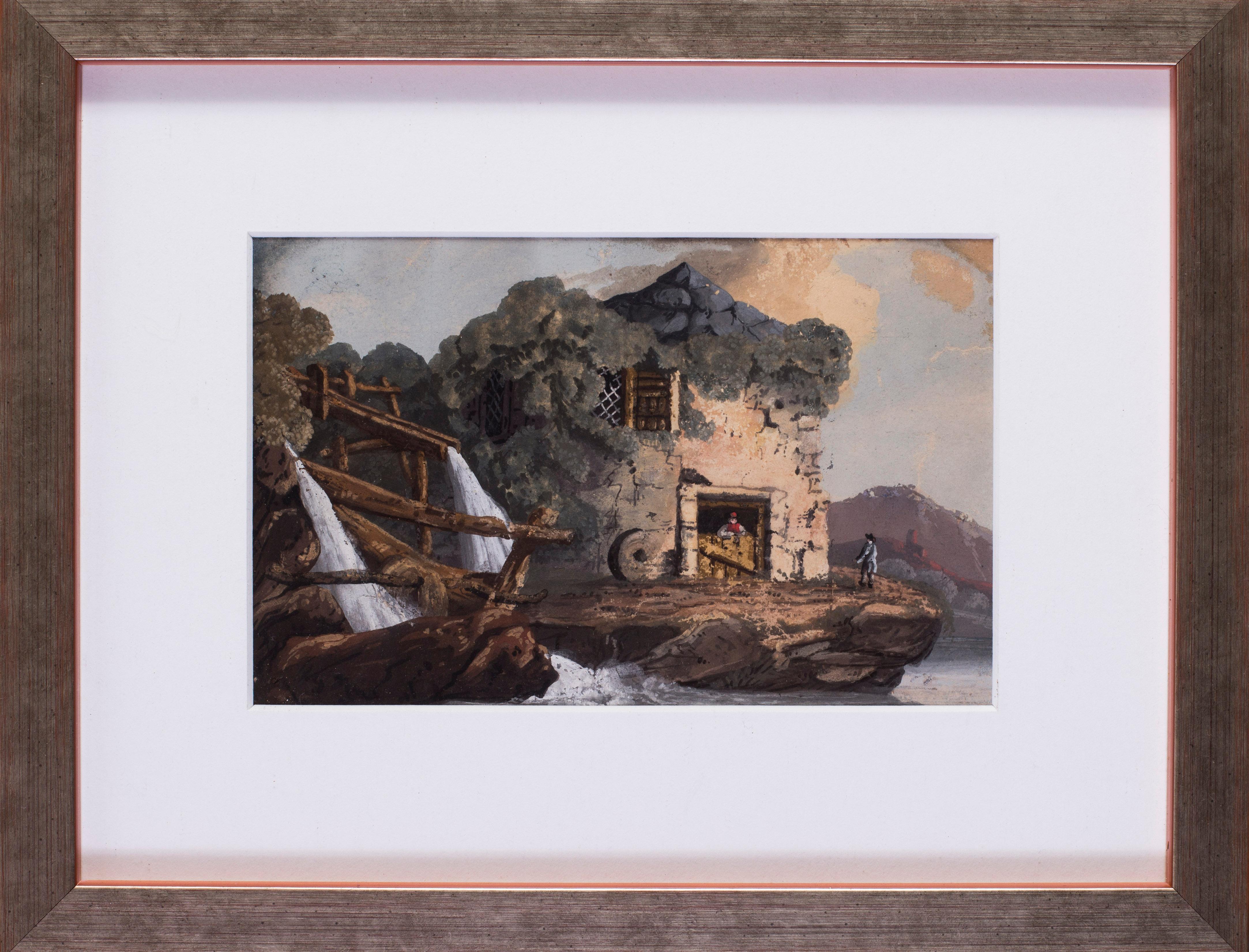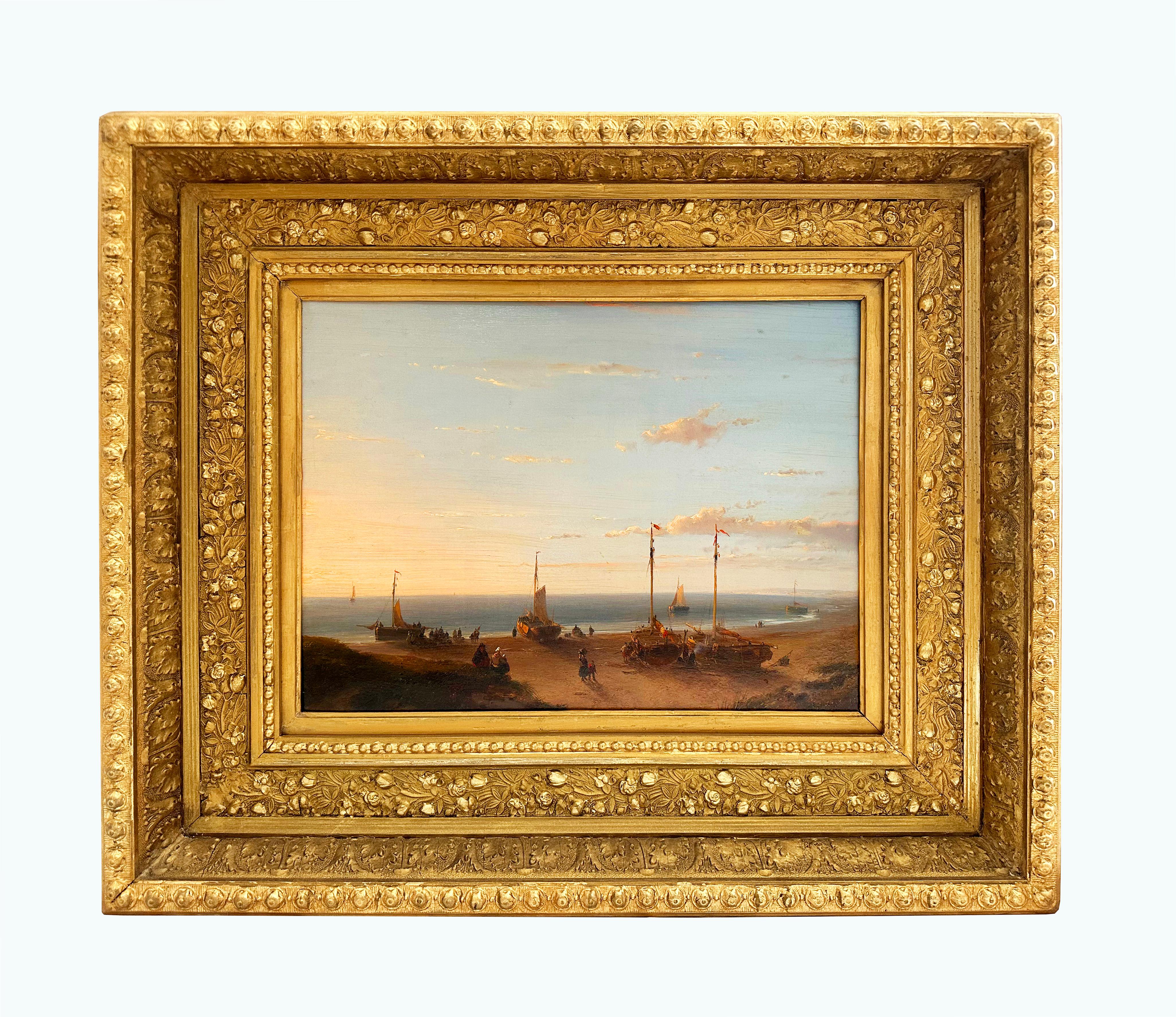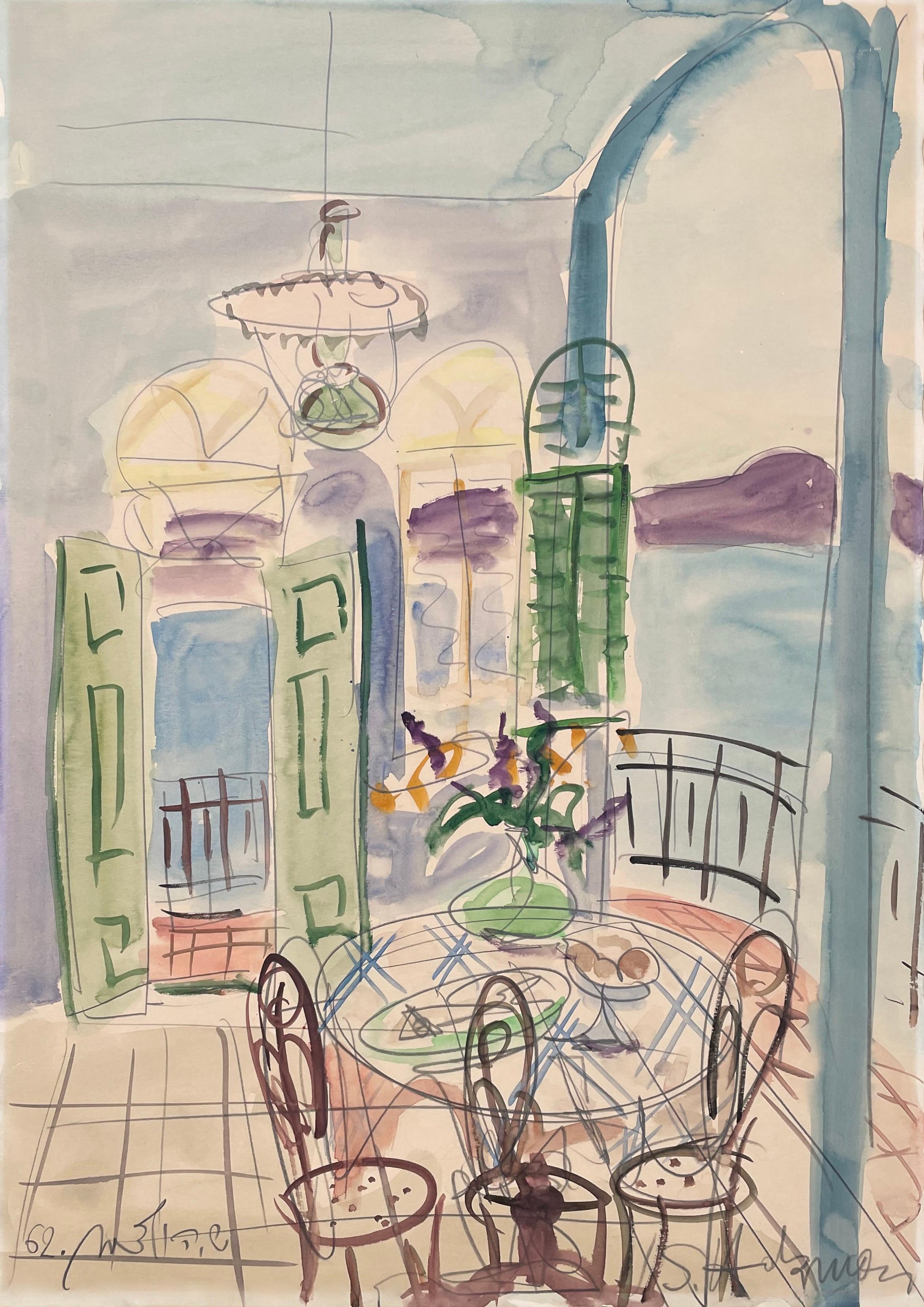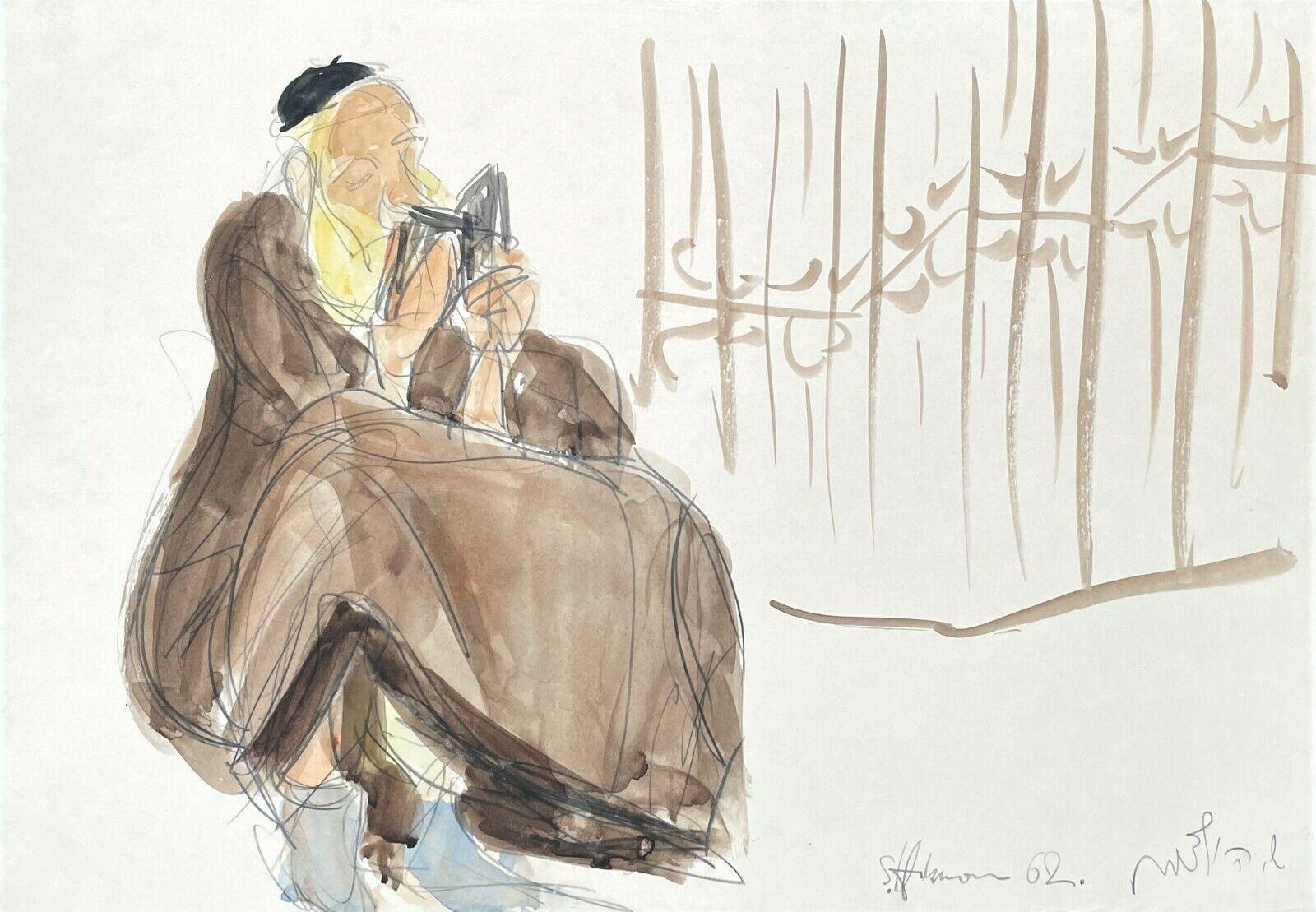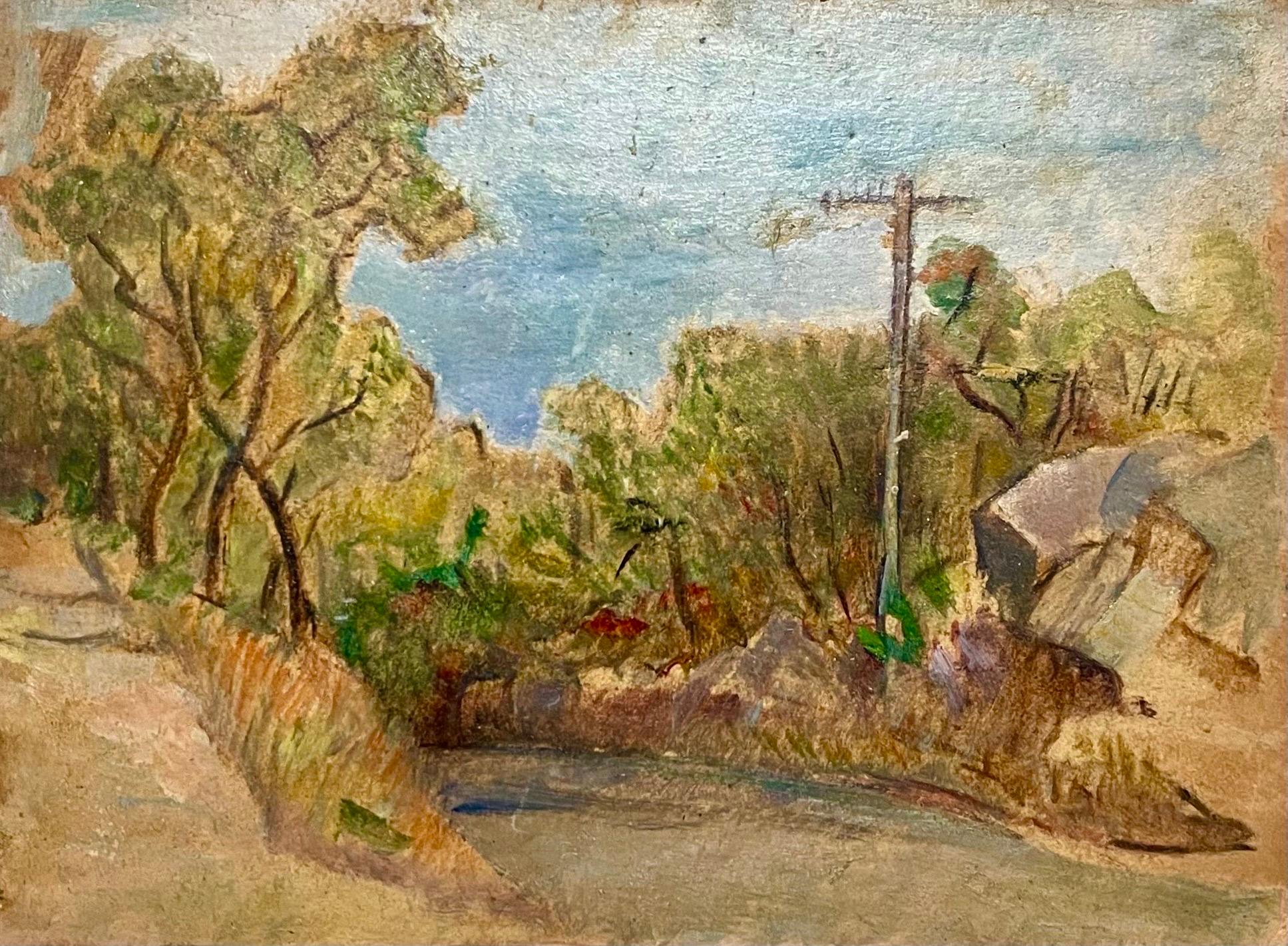Items Similar to Wheels of Industry Past and Present, Golden Age of Illustration - Standard Oil
Want more images or videos?
Request additional images or videos from the seller
1 of 14
Wheels of Industry Past and Present, Golden Age of Illustration - Standard Oil1920s
1920s
About the Item
This Golden Age of Illustration painting juxtaposes modern and ancient industrial practices. Giant eclectic generators from the current time of the 1920s are compared with animal-propelled technology from ancient Egypt. "Wheels of Industry Past and Present" was done on assignment for the Standard Oil Company. Unsigned, Provenance: Illustration House. Elegantly framed behind plexiglass. Framed Dimensions 30 x 42
- Attributed to:American illustrator c1930
- Creation Year:1920s
- Dimensions:Height: 14 in (35.56 cm)Width: 26 in (66.04 cm)Depth: 3 in (7.62 cm)
- Medium:
- Movement & Style:
- Period:
- Condition:
- Gallery Location:Miami, FL
- Reference Number:1stDibs: LU385312232482
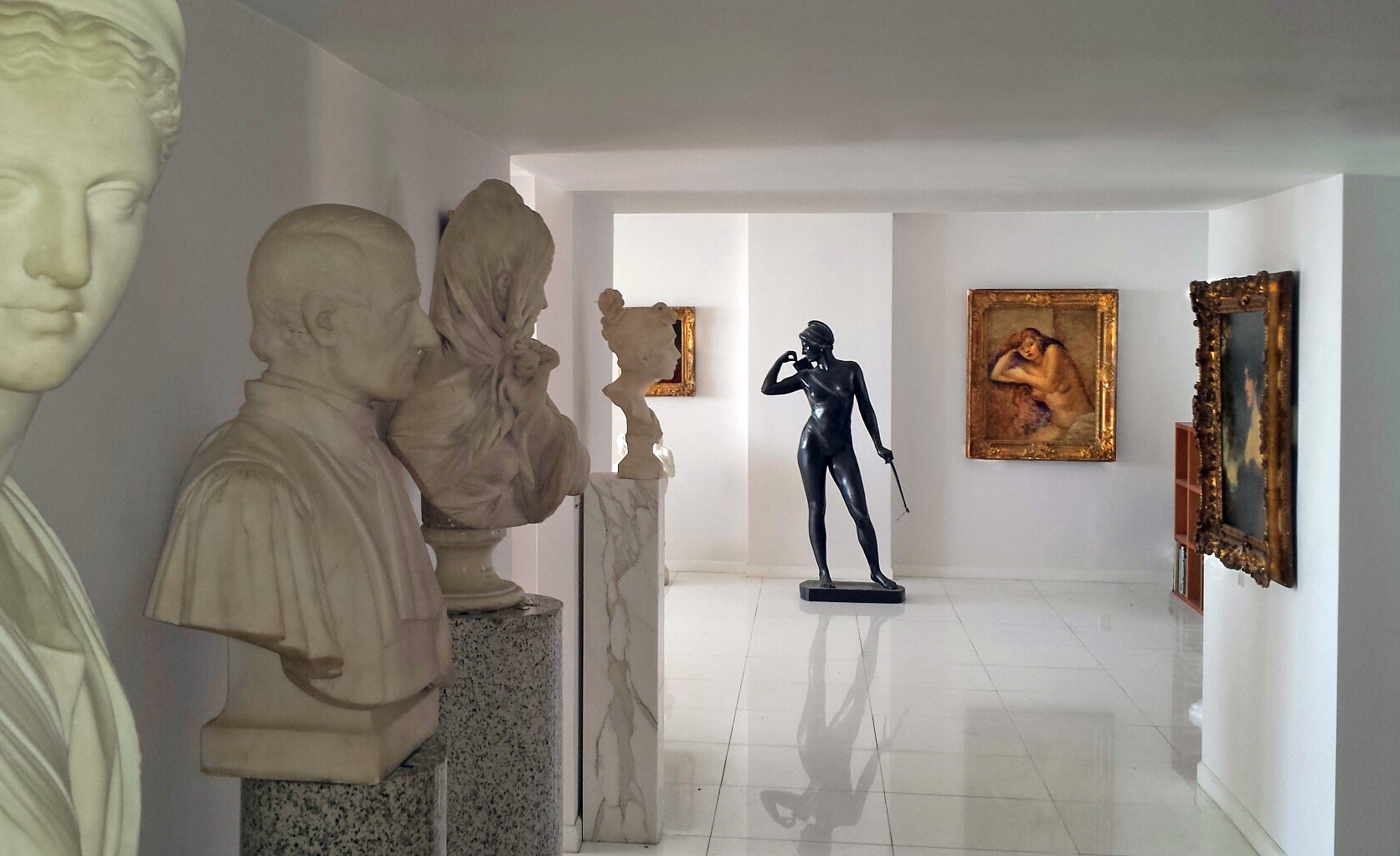
About the Seller
4.9
Gold Seller
These expertly vetted sellers are highly rated and consistently exceed customer expectations.
Established in 2005
1stDibs seller since 2016
102 sales on 1stDibs
Typical response time: 1 hour
- ShippingRetrieving quote...Ships From: Miami, FL
- Return PolicyA return for this item may be initiated within 3 days of delivery.
More From This SellerView All
- Soldier Shooting Gun with Bikini Girls, Mid-Century Mens Magazine WarBy Mort KünstlerLocated in Miami, FLThe artist tells a whole action-packed story in one picture. A handsome young soldier shoots his pistol at a passing bomb-dropping airplane. The close call splashes water on him and his two sexy girl...Category
1960s Realist Figurative Paintings
MaterialsBoard, Gouache, Pencil
- Futurist Vision - Mid-Century New York Skyline - Industrial ProgressLocated in Miami, FLRarely do you come across a work of art that is vastly different than just about anything you see. This work is undeniably brilliant and a sheer pleasure to behold. Alexander Leydenfrost...Category
1950s Art Deco Landscape Paintings
MaterialsGouache, Charcoal, Graphite, Board
- Pulp Magazine Marine Combat Scene Shoot Out in Blue NoirLocated in Miami, FLWhat makes this work important? It's not that it's a commissioned artwork for a men's 60s pulp adventure magazine depicting the instant a soldier is shot. The big point of the painting is how brilliantly the formal elements are thought out, designed, and executed. John McDermott tells a story using a complex figural composition in an unexpected wide-angle vision. The work is as abstract as it is representation. His use of light is significant because it creates a high-contrast two-color style that bears the mark of its creator. This is a work done by a master artist/illustrator without peers compared to artists living today. If the contemporary art world gave awards for draftsmanship, painting technique, and graphic design .... John McDermott would win the highest accolades. Initialed lower left - unframed John McDermott (August 30, 1919 – April 20, 1977), also known under the pen names J.M. Ryan and Mariner, was an American illustrator and author noted for action and adventure illustrations.[1] McDermott worked as an in-between and effects animator for Walt Disney Studios and as a US Marine combat artist,before establishing himself as a cover illustrator for 1950s paperbacks and pulp magazines such as Argosy, American Weekly, and Outdoor Life. Under his J.M. Ryan pen name, he wrote the novels The Rat Factory (1971), a derogatory satire of Walt Disney and the Disney studio; Brooks Wilson Ltd (1967), on which the 1970 film Loving was based; and Mother's Day (1969) about Ma Barker. Under his own name, he novelized director-writer Bo Widerberg's screenplay for the 1971 film Joe Hill, which would be his final published book. Early life John Richard McDermott was born 30 August 1919 in Pueblo, Colorado, the younger of two sons of Henry McDermott, an oil broker. McDermott was a young child when his father committed suicide.[4] The family eventually moved to Los Angeles where McDermott's mother, Hazel, worked in a beauty parlor. He graduated from Hollywood High School in 1936. Although he had had no formal art education, he took a job as an artist at Walt Disney Animation Studios. Career Disney At Disney, McDermott worked as an in-betweener and effects animator on Brave Little Tailor, Pinocchio, The Reluctant Dragon and Fantasia. His experiences while working at Disney, particularly during the time of the 1941 Disney animators' strike, would later become the basis for his 1969 satirical novel The Rat Factory. McDermott left Disney to fight with US forces during World War II. US Marines McDermott World War II sketch titled "Buddy is Wounded" On September 29, 1942, McDermott enlisted with the US Marine Corps. He served as a "pistol and palette" combat artist assigned to the map-making section. As a sergeant with the III Amphibious Corps, McDermott was involved in battles in the South Pacific theater of war, documenting the Guam, Okinawa and the Guadalcanal Campaigns. McDermott considered his wartime years to be his art education. "In the Marines, as a combat artist, I traveled with the troops and for three years got all the drawing opportunity anyone could want. My work changed enormously during this time and I’m sure it was due to constant drawing, every single day, from life, just putting down what I saw around me. In a few instances it was a dangerous kind of scholarship." According to the Marine Corps history journal Fortitudine, McDermott was so prolific that his contemporary style pen-and-ink sketches became easily recognizable to both Marines, from published work in Leatherneck Magazine, and civilians, from glossy copies supplied by the Marine Corps to the nation's press.His wartime art appears in World War II history books and is displayed at the Pentagon and the National Museum of the Marine Corps. Illustration Following the end of World War II, McDermott moved from California to New York City to work as a freelance illustrator. McDermott made his reputation drawing modern action, war and adventure scenes. His work adorned the covers and inside story pages of popular pulp magazines of the 1950s such as Argosy, Adventure, Blue Book, Outdoor Life and American Weekly. McDermott's illustrations appeared on numerous covers of 1950s paperback novels published by Dell, Fawcett Gold Medal, Bantam Mystery and others. His action graphics were geared toward thriller and detective genres, such as Donald Hamilton's Matt Helm books Murderers' Row and The Betrayers. He also created covers for science fiction comic titles such as Voyage to the Deep[citation needed] and horror-themed paperbacks such as the classic 1955 science fiction novel The Body Snatchers...Category
1960s American Realist Figurative Paintings
MaterialsIllustration Board, Gouache
- "The Glorious Flight - Across the Channel with Louis Bleriot" - Children's BookBy Alice and Martin ProvensenLocated in Miami, FLStudy for "The Glorious Flight - Across the Channel with Louis Bleriot"; 1983; Gouache on Illustration Board; 14.5" x 13.75"; Signed Lower Right; Unframed. From Wikipedia, the free encyclopedia Alice Rose[1] Provensen (née Twitchell; August 14, 1918[2] – April 23, 2018[3]) and Martin Provensen...Category
1980s American Modern Figurative Paintings
MaterialsBoard, Gouache
- Black Wolves Attack Two People Tied Up, Children's Books IllustrationBy Alice and Martin ProvensenLocated in Miami, FLAlice and Martin Provensen were an American couple who illustrated more than 40 children's books together. In 1984, the won the Caldecott for The Glorious Flight, the story of aviator Louis Blériot...Category
1960s Outsider Art Figurative Paintings
MaterialsBoard, Gouache
- Prospector firing Rifle ( Happiness is a Warm Gun ) Gay ArtBy Robert RiggsLocated in Miami, FLTempera mixed with gum arabic and alcohol on Renaissance Panel Robert Riggs was a gay man. Being gay in American during the 1940's time was something not to flaunt in public. Rigg's had to communicate his underlying feelings in more symbolic ways. Throughout Riggs oeuvre, one sees continuous references to strong hunked out manly men and vulnerable boys. It is a core element of is iconography and is described in a powerful graphic style. In “Prospector firing Rifle” is a Dick Pic. Riggs is clearly making a sexual statement about the moment of climax. The long, straight rifle explodes and is captured at the peak moment of climax. Meanwhile, the bag two bags of gold clearly resemble the other part of the male anatomy. Riggs was a thoughtful and meticulous visual thinker and nothing in any of Riggs’s compositions were haphazardly placed. In tribute to the artist’s suppressed feelings, I have given this work a second title “Happiness is a Warm Gun...Category
1940s Academic Figurative Paintings
MaterialsTempera
You May Also Like
- Figures at a millLocated in Petworth, West SussexEnglish school, 18th Century Figures at a mill Gouache on paper 4.5/8 x 7.1/2 in. (11.8 x 19 cm.)Category
19th Century Academic Landscape Paintings
MaterialsGouache, Paper
- The toy sellerBy Federico del CampoLocated in Roma, RMFederico Del Campo (Lima 1837 - Venice 1923), The Toy Seller (1877) Oil painting on panel 22 x 37 cm signed Campo on the left, on the back is an old label from Williams and sons ga...Category
1870s Academic Landscape Paintings
MaterialsOil, Board
- " At The Port" 19th Century Academic Realist Landscape Oil Painting on PanelBy Andreas SchelfhoutLocated in Jacksonville, FL"Sunrise on the Shore" by Andreas Schelfhout stands as a testament to the extraordinary talent of the Dutch artist, born in The Hague in 1787. A prominent figure of the Romantic move...Category
19th Century Academic Landscape Paintings
MaterialsOil, Board
- Untitled (Cafe Interior), Shimshon HolzmanBy Shimshon HolzmanLocated in Fairfield, CTArtist: Shimshon Holzman (1907-1986) Title: Untitled (Cafe Interior) Year: 1962 Medium: Watercolor and graphite on wove paper Size: 27.75 x 19.75 inches ...Category
1960s Academic Figurative Paintings
MaterialsGraphite, Watercolor
- Torah Scholar, Shimshon HolzmanBy Shimshon HolzmanLocated in Fairfield, CTArtist: Shimshon Holzman (1907-1986) Title: Torah Scholar Year: 1962 Medium: Watercolor and graphite on wove paper Size: 13.75 x 19.75 inches Condition: Excellent Inscription: Signed...Category
1960s Academic Figurative Paintings
MaterialsWatercolor, Graphite
- Simka Simkhovitch WPA Artist Oil Painting Gouache American Modernist PowerlineBy Simka SimkhovitchLocated in Surfside, FLSimka Simkhovitch (Russian/American 1893 - 1949) This came with a small grouping from the artist's family, some were hand signed some were not. These were studies for larger paintings. Simka Simkhovitch (Симха Файбусович Симхович) (aka Simka Faibusovich Simkhovich) (Novozybkov, Russia May 21, 1885 O.S./June 2, 1885 N.S.—Greenwich, Connecticut February 25, 1949) was a Ukrainian-Russian Jewish artist and immigrant to the United States. He painted theater scenery in his early career and then had several showings in galleries in New York City. Winning Works Progress Administration (WPA) commissions in the 1930s, he completed murals for the post offices in Jackson, Mississippi and Beaufort, North Carolina. His works are in the permanent collections of the Dallas Museum of Art, the National Museum of American Art and the Whitney Museum of American Art. Born outside Kyiv (Petrograd Ukraine) into a Jewish family who owned a small department store. During a severe case of measles when he was seven, Simcha Simchovitch sketched the views outside his window and decided to become an artist, over his father's objections. Beginning in 1905, he studied at the Grekov Odessa Art School and upon completion of his studies in 1911 received a recommendation to be admitted to the Imperial Academy of Arts. Though he enrolled to begin classes in architecture, painting, and sculpture at the Imperial Academy, he was dropped from the school roster in December because of the quota on the number of Jewish students and drafted into the army. Simchovitch served as a private in the 175th Infantry Regiment Baturyn [ru] until his demobilization in 1912. Re-enrolling in the Imperial Academy, he audited classes. Simka Simkhovitch exhibited paintings and sculptures in 1918 as part of an exhibition of Jewish artists and in 1919 placed 1st in the competition "The Great Russian Revolution" with a painting called "Russian Revolution" which was hung in the State Museum of Revolution. In 1922, Simkha Simkhovitch exhibited at the International Book Fair in Florence (Italian: Fiera Internazionale del Libro di Firenze). In 1924, Simkhovitch came to the United States to make illustrations for Soviet textbooks and decided to immigrate instead. Initially he supported himself by doing commercial art and a few portrait commissions. In 1927, he was hired to paint a screen for a scene in the play "The Command to Love" by Fritz Gottwald and Rudolph Lothar which was playing at the Longacre Theatre on Broadway. Art dealers began clamoring for the screen and Simkhovitch began a career as a screen painter for the theater. Catching the attention of the screenwriter, Ernest Pascal, he worked as an illustrator for Pascal, who then introduced him to gallery owner, Marie Sterner. Simkhovitch's works appeared at the Marie Sterner Gallery beginning with a 1927 exhibit and were repeated the following year. Simkhovitch had an exhibit in 1929 at Sterner's on circus paintings. In 1931, he held a showing of works at the Helen Hackett Gallery, in New York City and later that same year he was one of the featured artists of a special exhibit in San Francisco at the California Palace of the Legion of Honor in Lincoln Park. The exhibit was coordinated by Marie Sterner and included four watercolors, including one titled "Nudes". He is of the generation of Russian Soviet artists such as Isaac Pailes, Serge Charchoune, Marc Chagall, Chana Orloff, Isaac Ilyich Levitan, and Ossip Zadkine. In 1936, Simkhovitch was selected to complete the mural for the WPA Post office project in Jackson, Mississippi. The mural was hung in the post office and courthouse in 1938 depicted a plantation theme. Painted on the wall behind the judge’s bench, “Pursuits of Life in Mississippi”, a depiction of black workers engaged in manual labor amid scenes of white professionals and socialites, was eventually covered over in later years during renovations due to its stereotypical African American imagery. Simka painted what he thought was typical of Jackson. His impression of pre-civil rights Mississippi was evidently Greek Revival column houses, weeping willow trees, working class families, and the oppression of African Americans. He painted African American men picking cotton, while a white man took account of the harvest and a white judge advised a white family, calling it Pursuits of Life in Mississippi. Though clearly endorsed by the government and initially generally well-received, the mural soon raised concerns with locals as the climate toward racial segregation began to change. The main concern was whether depictions that show African Americans in subjugated societal roles should be featured in a courtroom. The following year, his painting "Holiday" won praise at an exhibition in Lincoln, Nebraska. In 1940, Simkhovitch's second WPA post office project was completed when four murals, "The Cape Lookout Lighthouse and the Orville W. Mail Boat", "The Wreck of the Crissie Wright", "Sand Ponies" and "Canada Geese" were installed in Beaufort, North Carolina. The works were commissioned in 1938 and did not generate the controversy that the Jackson mural had. The main mural is "The Wreck of the Crissie Wright" and depicts a shipwreck which had occurred in Beaufort in 1866. "The Cape Lookout Lighthouse and the Orville W. Mail Boat" depicted the lighthouse built in 1859 and the mail boat that was running mail during the time which Simkhovitch was there. The boat ran mail for the area until 1957. "Sand Ponies" shows the wild horses common to the North Carolina barrier islands and "Canada Geese" showed the importance of hunting and fishing in the area. All four murals were restored in the 1990s by Elisabeth Speight, daughter of two other WPA muralists, Francis Speight...Category
1930s American Modern Landscape Paintings
MaterialsGouache, Oil, Board
Recently Viewed
View AllMore Ways To Browse
Modern Past
Plexi Frame
Modern Retro Illustration
Retro Landscape Illustration
Propellor Vintage
Used Generators
Animal On Wheels
Blue Moon
Mexico Travel
Vintage Water Well
Venice Oil Canvas
English School Oil Painting
Beach And Coastal
From Oregon
Copper Series
William Manning
Contemporary Art Dealers
Robert Wood Artist
